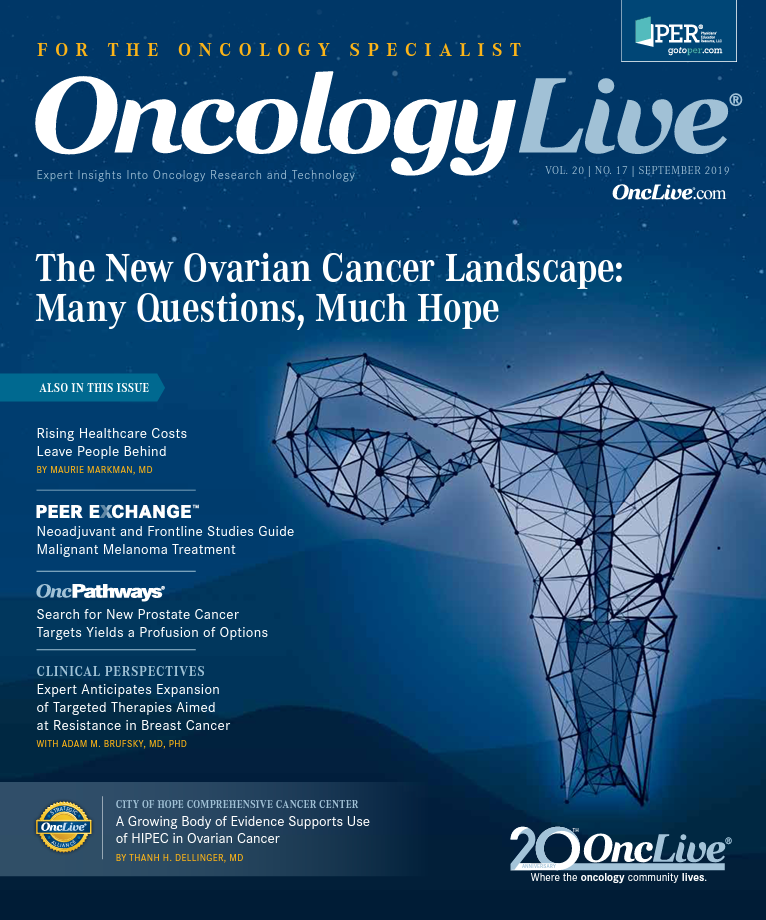Publication
Article
Oncology Live®
Fitness Assessments Should Be Integrated Into Care for Older Patients With Breast Cancer
Author(s):
Treatment decisions for older patients with breast cancer should be individualized based on the fitness and frailty of the patient, making the use of geriatric assessment tools an essential element of care, according to Armin Shahrokni, MD, MPH.
Armin Shahrokni, MD, MPH

Armin Shahrokni, MD, MPH
Treatment decisions for older patients with breast cancer should be individualized based on the fitness and frailty of the patient, making the use of geriatric assessment tools an essential element of care, according to Armin Shahrokni, MD, MPH.
In a presentation at the 18th Annual International Congress on the Future of Breast Cancer® East, hosted by Physicians’ Education Resource®, LLC, in New York, New York, Shahrokni emphasized the importance of performing a comprehensive geriatric assessment for each patient to determine optimal treatment.1
“There are a lot of exciting advances in the field of breast oncology, but the challenge is many times when you focus on the biomarkers and treatment-related issues, you forget the patient that is in front of you, and as geriatricians, we try to focus on the patient as a whole,” said Shahrokni, a geriatrician and an oncologist at Memorial Sloan Kettering Cancer Center in New York, New York.
Seventy percent of patients with cancer are ≥65 years, and the geriatric patient with cancer population is projected to significantly increase, with the probability of developing cancer reaching 1 in 3 for men and 1 in 4 for women.2 The median age at diagnosis for patients with breast cancer is 62 (range, 55-64), and the percentage of deaths due to cancer is highest in those aged 65 to 74 years, at 22.9%.
However, this population comprises a spectrum of patients whose physical condition does not match the age on their chart. Assessment of fitness and frailty, determination of life expectancy, and a balance of the toxicity of the treatment with potential benefits should replace age when making clinical decisions, according the Shahrokni.
Comprehensive Geriatric Assessment
Implementation of geriatric assessments in practice can aid in the identification of conditions that are often overlooked in routine care. In 1989 the National Institutes of Health first proposed a comprehensive geriatric assessment as a way to identify patient problems. Both the American Society for Clinical Oncology (ASCO) and the National Comprehensive Cancer Network (NCCN)2,3 have issued guidelines for geriatric oncology for the practical assessment and management of this patient population.
Traditional oncology performance measures do not comprehensively assess geriatric patients, who are at higher risk from adverse events caused by chemotherapy. With uniform treatment recommendations by age rather than by fitness and frailty, some patients may experience overtreatment, whereas others may be undertreated.
The principal components of the geriatric assessment include functional status, comorbidities, cognition, and psychological, social, and nutritional status.
Figure. Risk Score (A) Versus Physician-Rated Karnofsky Performance Status (B) to Predict Grades 3-5 Chemotherapy Toxicity4
“As geriatricians, we spend 60 minutes or more with patients to assess their functional status, comorbidities, nutrition, mood, pharmacy, the place they live, their social support, and their cognition,” Shahrokni said. “You may think this is too much, but some of these things you are already doing in your clinic.” The Cancer and Aging Research Group brief geriatric assessment scale is designed to obtain specific estimates on the risk of chemotherapy toxicity. The predictive tool allows patients to complete a 20-to-30-minute self-assessment that includes activities of daily life, instrumental activities of daily life, number of falls in the prior 6 months, number and type of comorbid conditions, number of medications, vision and hearing assessment, social activity limitation measures, social support assessment, and a section to report any unintentional weight loss in the prior 6 months.
Physicians then follow up with an estimated 10-minute assessment in the clinic, where they perform cognitive examination through the Blessed Orientation Memory Concentration test, functional status with timed up and go tests, and nutritional evaluation through body mass index calculation.
“Without geriatric assessment, I don’t know how we can even calculate life expectancy of older patients,” said Shahrokni. “And the good thing is [with these assessments] we can also predict chemotherapy toxicity [Figure].”4
Balancing Life Expectancy With Treatment Goals
Defining the goals of treatment for geriatric patients with cancer must take the life expectancy of the patient into consideration. One such method, recommended in the ASCO and NCCN guidelines, is ePrognosis, an online assessment tool by the University of California, San Francisco, that takes into consideration noncancer comorbidities such as alcohol abuse, renal failure, pulmonary circulation disorders, and HIV/AIDS status to calculate mortality risk.2
The calculation of life expectancy allows clinicians to judge whether the benefit of the cancer treatment will be beyond their patient’s expected survival.
Treatment selection should balance the physician’s goals and those of the patient, which may not always include longevity. “Physician goals are [to provide] adjuvant chemotherapy and increase cure [and] prevent metastases, while maintaining quality of life and controlling the cancer,” said Shahrokni. “There are times that patients are not in agreement with [treatment decisions], so [clinicians should] explore that. [Patients] would like to remain functional, and they love their independence.”
In a secondary analysis of a Cancer and Leukemia Group B study (NCT00024102) focusing on adjuvant treatment of older patients with breast cancer, investigators reported that 42% (n = 256) of patients experienced a decline in physical function at a median follow-up of 5.1 months (range, 2.2-6.4 months) post chemotherapy compared with baseline.
At 12-month follow-up, 47% of patients recovered within 10 points of their baseline physical function based on the European Organisation for Research and Treatment of Cancer subscale, whereas 53% experienced further decline. Regardless of a decline in physical function by the end of chemotherapy, 30% experienced a decline at 12 months.5
Hurria et al reported that approximately half of the patients who experienced physical function decline were able to return to baseline, noting that further research is needed to determine whether intervention aimed at increasing functional recovery can improve outcomes for these patients.4
This includes access to investigational treatments that are limited for older patients, who are often excluded from clinical trials because of comorbidities. Less than 25% of patients aged 65 to 74 years were enrolled in National Cancer Institute Cooperative Group clinical trials, and less than 10% were 75 years or older.2
References
- Shahrokni A. Treatment considerations for older patients. Presented at: 18th Annual International Congress on the Future of Breast Cancer® East, hosted by Physicians’ Education Resource®, LLC; July 19-20, 2019; New York, NY.
- Mohile SG, Dale W, Somerfield MR, et al. Practical assessment and management of vulnerabilities in older patients receiving chemotherapy: ASCO guideline for geriatric oncology. J Clin Oncol. 2018;36(22):2326-2347. doi: 10.1200/JCO.2018.78.8687.
- NCCN Practice Guidelines in Oncology. Older Adult Oncology, version 1.2019. National Comprehensive Cancer Network website. nccn.org/professionals/physician_gls/pdf/senior.pdf. Updated January 8, 2019. Accessed July 26, 2019.
- Hurria A, Togawa K, Mohile SG, et al. Predicting chemotherapy toxicity in older adults with cancer: a prospective multicenter study. J Clin Oncol. 2011;29(25):3457-3465. doi: 10.1200/JCO.2011.34.7625.
- Hurria A, Soto-Perez-de-Celis E, Allred JB, et al. Functional decline and resilience in older women receiving adjuvant chemotherapy for breast cancer. J Am Geriatr Soc. 2019;67(5):920-927. doi: 10.1111/jgs.15493.



























%20(2)%201-Recovered-Recovered-Recovered-Recovered-Recovered-Recovered-Recovered-Recovered-Recovered-Recovered-Recovered-Recovered-Recovered-Recovered-Recovered-Recovered-Recovered.jpg?fit=crop&auto=format)
%20(2)%201-Recovered-Recovered-Recovered-Recovered-Recovered-Recovered-Recovered-Recovered-Recovered-Recovered-Recovered-Recovered-Recovered-Recovered-Recovered-Recovered-Recovered.jpg?fit=crop&auto=format)
